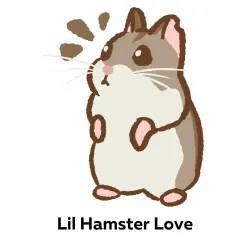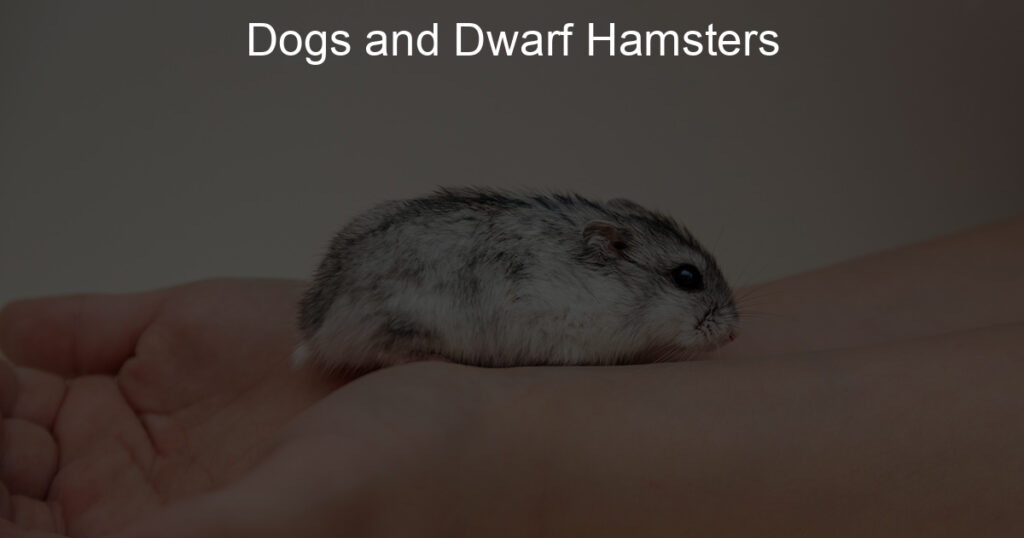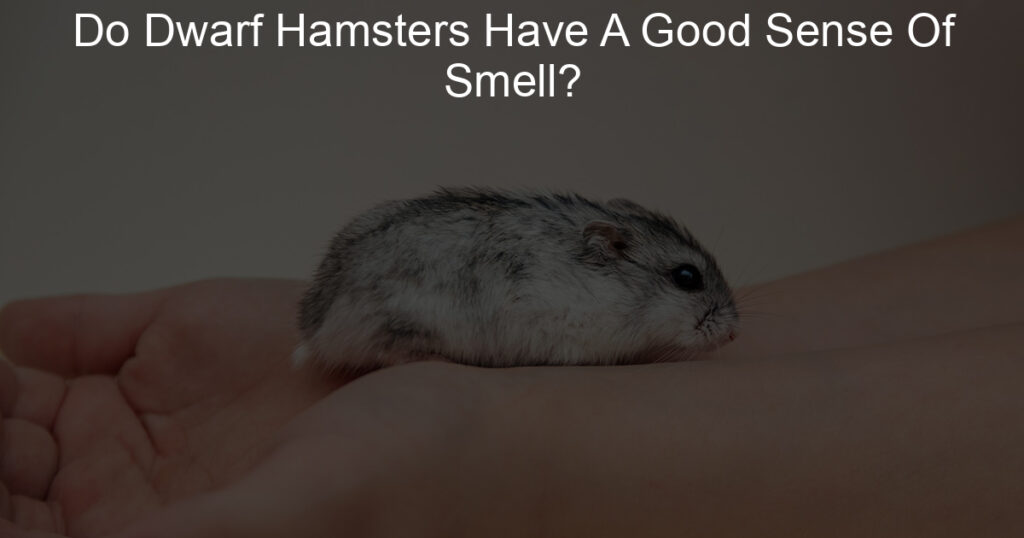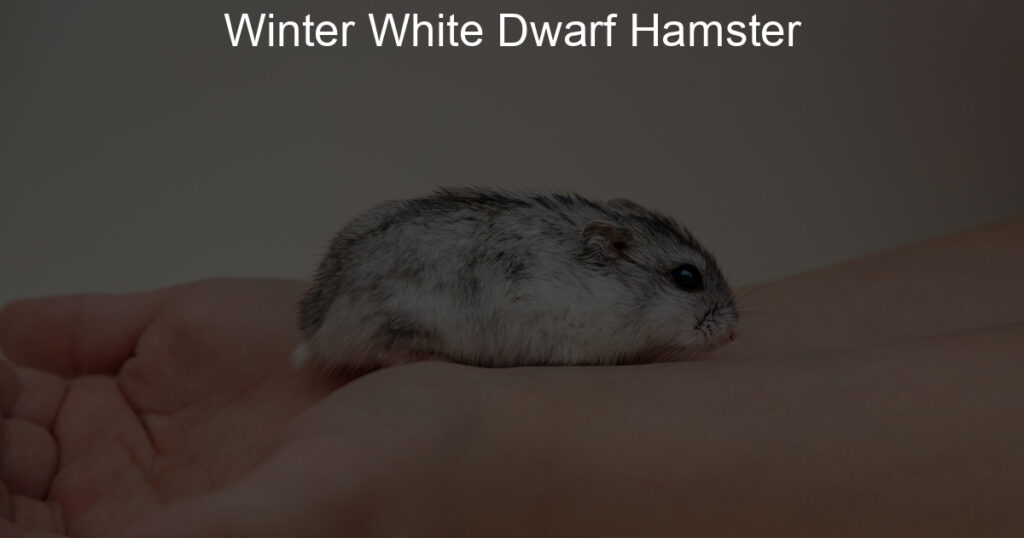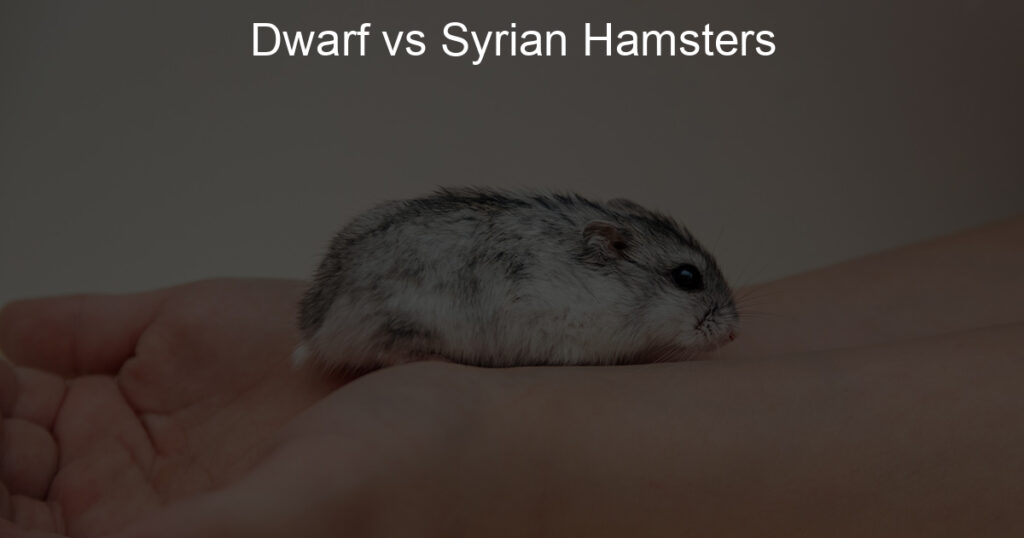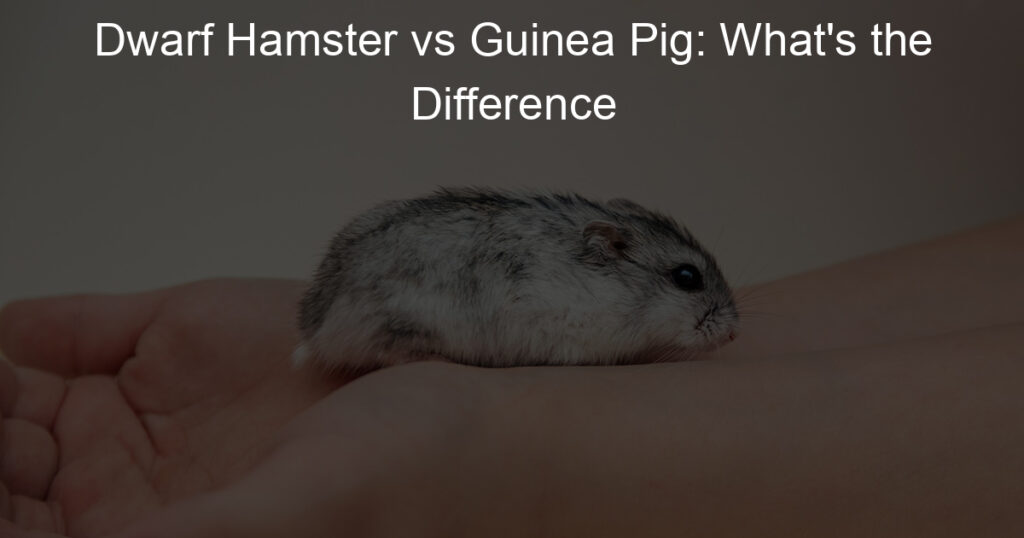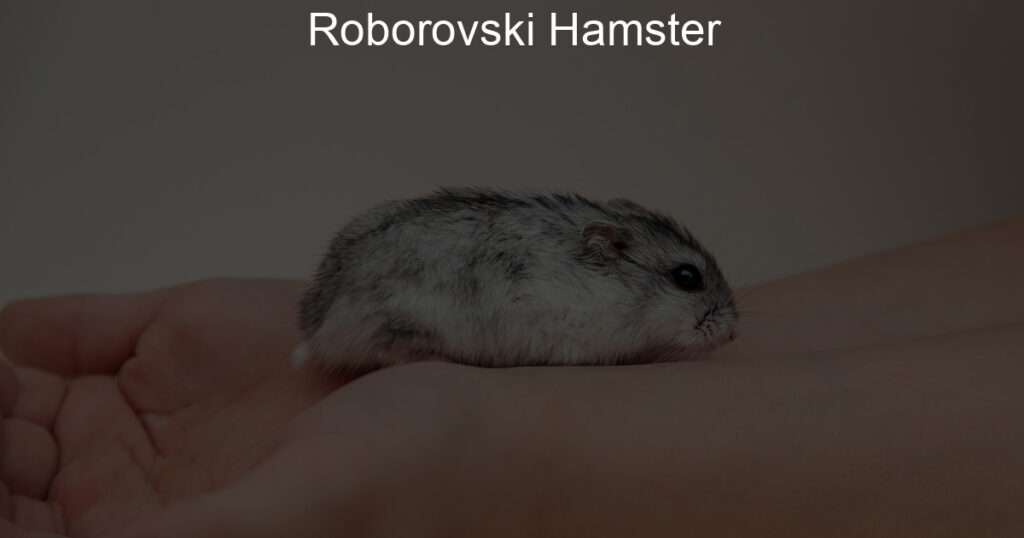If you’re looking for a furry companion to bring into your home, why not consider a dwarf hamster? These small pets are cute and cuddly – perfect for those who aren’t ready for the commitment of a dog.
Dwarf hamsters require less exercise and maintenance than larger animals, making them ideal additions to most households. Plus, they’re loads of fun: interacting with your pet is an excellent way to bond with them!
In this blog post, we’ll give you an overview of why getting a dwarf hamster rather than another pet might be the right decision for your family. Regardless of whether you already own dogs or just want something smaller – come and explore all aspects associated with having both these amazing companions in ‘one house’!
Can a dog and hamster live together?
It’s no surprise that people want to know the answer to the popular question: can a dog and hamster live together? After all, these two pets are at vastly different points on the size spectrum with a serious difference in physical capabilities!
The main stock answer is usually ‘no’, as it’s generally considered an unsafe living arrangement due to the potential danger the larger pet might pose.
However, if the dog is well-trained and you have a knack for vigilance in monitoring the interaction between pets, then it’s not completely out of the question. If safety is your top priority though, it’s probably best to stick with separate abodes for your fuzzballs.
Do dogs and dwarf hamsters get along?
Many people consider dogs and dwarf hamsters to be like oil and water: completely incompatible. However, if handled correctly, the two species can get along surprisingly well.
Although a little caution is necessary, dogs and dwarf hamsters can coexist peacefully in the same home with careful supervision. To ensure the safety of both animals, it’s important to allow them frequent supervised play sessions where they can both express their natural behaviors; this is especially true of dogs because they are naturally predatory when left unchecked.
Additionally, giving each animal its own independent space helps limit potential conflict between them. If done properly and safely, you can have a happy home with both a dog and a dwarf hamster!
Is it okay to have a hamster and a dog?
Having both a hamster and a dog could be an interesting combination since they’re both cute little creatures that need lots of love. Although there are some dangers associated with keeping them in the same space, it is possible to have them thrive together in harmony.
However, it does require extra consideration for the health and safety of both animals. Before getting either one, make sure to research appropriate housing as well as safety measures when caring for both species simultaneously.
It might also help to get advice from a professional such as your veterinarian or an experienced breeder before taking on this furry duo. All-in-all, with care and attention, having a hamster and a dog can be an enriching experience!
Can a dog be jealous of a hamster?
Can a dog be jealous of a hamster? It certainly seems possible. After all, jealousy is a very common emotion in animals that live with humans, and dogs are no exception.
They can become attached to their owners as well as other animals and have been known to have “rivalry” over attention or companionship. Some research has found that dogs may see hamsters as competition when it comes to their owner’s affection — similar to how a child may be jealous of the arrival of a new baby sibling.
However, because both species communicate differently, we’ll likely never know for sure if a dog is feeling envious of their furry housemate. So for now at least, the big question of whether dogs can be jealous of hamsters will remain unanswered!
Can dogs give hamsters fleas?
It’s a reasonable question to ask: Can dogs give hamsters fleas? The short answer is yes, it is possible.
Dogs, cats, rodents, and other animals can all carry fleas to some degree, but if your dog or hamster has a flea infestation you’ll need to take certain steps to prevent further spreading. You should make sure to thoroughly groom and wash both your pet dog and the hamster to rid them of any potential fleas.
Additionally, you must get rid of anything the dog or hamster has come into contact with – such as bedding materials – that might be harboring the parasites. By taking the necessary precautions you can make sure that both your precious pup and pet hamster are both safe from annoying pests.
Can hamsters and dogs play together?
While not all dogs and hamsters can play together, they can potentially become friends. It is important to first make sure that any interactions between the two animals are supervised to ensure safety.
When introducing the two, it’s best to start slowly by having them spend time nearby so they can get used to each other. If all goes well, allowing them to interact in a playful way like walking the hamster on a leash or letting the dog sniff the hamster may be possible.
Ultimately, it’s important for both parties to feel comfortable and safe when interacting with one another.
Why do dogs love hamsters?
Dogs love hamsters for many reasons, and the relationship between these two animals can be a truly fascinating one. Studies have shown that dogs can understand what hamsters are trying to communicate in their way and the two species have been found to naturally gravitate toward each other.
Dog owners often report that their canine seems sparked by curiosity whenever they encounter a hamster, and it’s believed this interest is piqued by observing the critter’s playful behavior.
While dog owners need to keep an eye on their pup when near a small pet like a hamster, there’s no denying that our four-legged friends enjoy the company of “pocket pets”. It’s possible someday we’ll even find out why dogs happen to adore the furry little rodents so much!
What if a dog eats hamster food?
If your dog gobbles up your hamster’s food, you shouldn’t be too worried. Hamster food is generally safe for dogs to eat, as long as it doesn’t make up the bulk of their diet.
Just like any other type of pet food, it should be treated as a snack and not a meal replacement. The high levels of sugar or fat in some hamster treats are not healthy for dogs either, so make sure to read the ingredients before feeding them to your pup.
As for your pup’s health, you might want to consider adding some more nutrients and minerals specifically catered towards dogs that can help fill the dietary gap caused by snacking on treats like hamster food.
Are dog treats good for hamsters?
It may sound funny at first, but there are many pet owners out there who ponder the question “are dog treats good for hamsters?” After all, dogs and hamsters have a lot of similarities: they’re both furry mammals that often live in cages and need to have a good diet to lead healthy lives.
While it may seem like you could use the same types of treats that you give your pooch on your small rodents, unfortunately, it’s not usually wise. Dog treats are usually too high-fat and calorie-dense to be safe for smaller animals like hamsters. Stick to giving your hamster healthy snacks he was designed to eat!
Can dogs smell hamsters?
It’s a common question that many curious pet owners have—can dogs smell hamsters? The answer is yes!
Dogs have an incredible sense of smell that helps them pick up on unusual scents and the distinctive odor of a hamster can get their attention. Of course, the reaction that your pup will have once it detects the presence of a hamster will depend on its personality.
Some may bark or display agitation, while others may take it in stride. While you certainly don’t want your pup to carry this behavior into your home if you are planning to adopt a hamster, with proper socialization, your dog should come to understand that the presence of a small rodent isn’t anything to be alarmed about.
Are hamsters easier than dogs?
When it comes to choosing a pet, everyone has different needs and preferences. While dogs can be full of energy and require long walks and playtime, hamsters have much more low-key requirements.
In terms of feeding, hamsters only need a small amount of food each day, meaning you don’t have to purchase or prepare large amounts. They are also easy to take care of since they can be kept in their enclosure with a wheel for exercise – no one wants to take their hamster on an afternoon walk!
On the other hand, while dogs do require more work, they can offer plenty of companionship and cuddles along the way. So whether you’re looking for a high-energy pup or a low-key pal, both hamsters and dogs provide unique benefits that make them great companion animals.
On the Whole
Whether you have a giant poodle or a dwarf hamster, the takeaway from this blog post is that both furry friends require a great deal of time and attention. Dogs need to be taken for regular walks so they can burn off energy and stay physically fit.
Dwarf hamsters, like all hamsters, also need an enriched environment with interaction and playtime. Regular exercise, healthy food, and mental stimulation will ensure both companions are healthy and happy – making them the perfect companions for any family!
As long as pet parents do their research and invest in the care of their furry friends, dogs, and dwarf hamsters can provide years of love and companionship in return.
